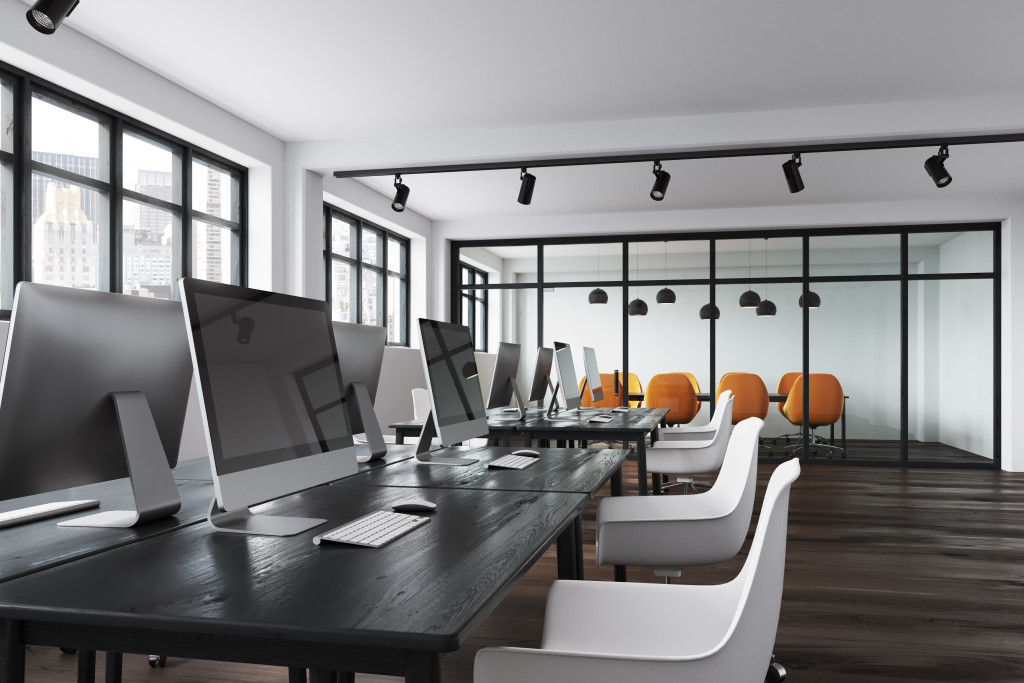- Employers should invest in creating a suitable workplace for employees to increase productivity, job satisfaction, and engagement.
- Factors such as air quality, workspace design, lighting, noise levels, and updated technology should be considered when optimizing the work environment.
- Natural ventilation, ergonomic furniture, and dedicated workspaces can help to reduce fatigue, improve posture and reduce the risk of musculoskeletal disorders (MSDs).
- Adequate light exposure helps to maintain healthy circadian rhythms, while limiting background noise helps to keep the focus on tasks.
Creating a suitable workplace for employees is essential for their productivity. An optimal workspace can help to create an atmosphere that leads to greater focus, improved collaboration between team members, and better job satisfaction. Studies have shown that a well-designed workplace can increase employee productivity by up to 20%.
Employees who are comfortable in their workspaces tend to be more engaged and motivated. A good work environment helps them to feel secure and accepted, enabling them to contribute more productive energy to their tasks. Studies have also suggested that workplaces with a positive atmosphere can result in 28% higher job satisfaction among employees.
The physical workspace design is integral when creating an ideal workplace environment. Research has revealed that there are certain aspects for employers to consider. Here are a few tips to consider.
Air Quality
Air quality is a critical factor in creating a suitable workplace for employees. Poor air quality can cause fatigue, eye irritation, headaches, and difficulty concentrating, leading to low productivity. The World Health Organization (WHO) states that air pollution is the top environmental hazard to human health, and it has been linked directly to an increase in lost workdays due to sickness.
Ensuring adequate ventilation within the workplace is essential for maintaining good air quality. Management should consider increasing natural ventilation by opening windows or installing fans when needed and investing in mechanical ventilation systems if the work requires it. It’s also essential for employers to monitor and address any indoor air contaminants such as mold, dust mites, volatile organic compounds (VOCs), and asbestos if present.
Investing in commercial HVAC will also be vital for better air quality. Employers must ensure that workers enjoy the ideal temperature when working at the office for better performance.
Design

Workspace design and layout are essential to creating a suitable workplace for employees. Several aspects to consider when designing a workspace include ergonomics, space allocation, and workflow efficiency.
Ergonomics
Ergonomics refers to the study of work environments designed to be comfortable and efficient. Ergonomic furniture such as adjustable chairs and desks can help to reduce pain and fatigue while promoting better posture. Studies have shown that ergonomic office equipment can reduce the risk of musculoskeletal disorders (MSDs) by up to 34%. Good posture helps people focus on their tasks, increasing productivity.
Space allocation
Space allocation is another crucial factor in workspace design. Research has revealed that employees with dedicated workspaces tend to be more productive than those working in open-plan offices. Dedicated workspaces provide individuals with greater privacy and personalization, which leads to increased motivation and job satisfaction. Employers should also ensure ample storage for files, documents, stationery, and other items needed for work purposes.
Workflow efficiency
Finally, employers should consider workflow efficiency when it comes to workspace design. This includes ensuring all necessary equipment is readily accessible without moving around too much or waiting too long for access. It’s also essential to set up workspaces to facilitate collaboration between team members while allowing individuals enough privacy for focused work tasks. As a result, employees will be more likely to complete tasks more quickly while feeling more connected with their team members.
Updated technology
Employers should also invest in updated technology when improving workplace design and layout. Technology can improve workflow efficiency and give employees more control over their environment. For example, providing adjustable lighting systems and automated temperature control options allows employees to adjust their settings to suit their needs.
Lighting

A sound lighting system is essential for creating a suitable workplace environment. Studies have shown that natural lighting can improve alertness, reduce stress, and help people stay productive during the day. Exposure to natural light also helps maintain healthy circadian rhythms, reducing the risk of health issues such as depression and obesity. Artificial lighting should be used to supplement or replace natural light when needed.
Lighting should be considered from both an aesthetic and functional standpoint. The brightness of the lights should be adjusted depending on the time of day to ensure employees are comfortable without feeling too sleepy. Adequate lighting should also be provided for individuals who need it for specific tasks such as reading or writing reports.
Noise Level
Noise levels are another essential factor to consider when creating a suitable workplace. Too much noise can be distracting and lead to decreased productivity, while too little noise can cause isolation and loneliness among employees. The ideal noise level is somewhere between – just enough to create an energizing atmosphere but not so loud that it disrupts focus or concentration.
Ideally, employers should aim for a sound level of 50-55 decibels (dB). This level is most conducive to work performance as it creates an environment that allows people to concentrate without feeling overwhelmed by background noise. To reduce reverberation within the workspace, employers should also consider using sound-dampening materials such as acoustic panels or foam tiles on the walls and ceiling.
Final Thoughts
Creating a suitable workplace for employees is essential for their productivity, engagement, and overall job satisfaction. When striving to create the ideal environment, employers should consider air quality, workspace design, lighting, and noise levels. By doing so, they will be able to foster an atmosphere that encourages employee productivity while promoting their physical and mental well-being. Doing this can help employers reap the rewards of a higher performing, more engaged staff with increased motivation and job satisfaction.



